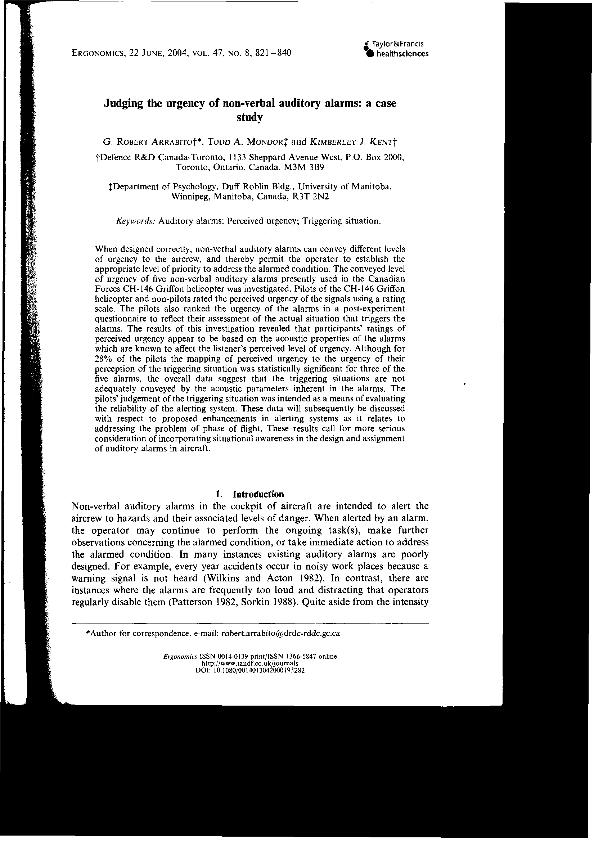Judging the urgency of non-verbal auditory alarms : a case study

Contenido multimedia no disponible por derechos de autor o por acceso restringido. Contacte con la institución para más información.
| Tag | 1 | 2 | Valor |
|---|---|---|---|
| LDR | 00000nab a2200000 i 4500 | ||
| 001 | MAP20071505717 | ||
| 003 | MAP | ||
| 005 | 20080418124805.0 | ||
| 007 | hzruuu---uuuu | ||
| 008 | 040913e20040601gbr|||| | |00010|eng d | ||
| 035 | $a6800012720 | ||
| 040 | $aMAP$bspa | ||
| 084 | $a875 | ||
| 100 | 1 | $0MAPA20080237264$aArrabito, Robert G. | |
| 245 | 1 | 0 | $aJudging the urgency of non-verbal auditory alarms$b: a case study$cG. Robert Arrabito, Todd A. Mondor, Kimberley J. Kent |
| 520 | 8 | $aWhen designed correctly, non-verbal auditory alarms can convey different levels of urgency to the aircrew, and thereby permit the operator to establish the appropiate level of priority to address the alarmed condition. The conveyed level of urgency of five non-verbal auditory alarms presently used in the Canadian Forces CH-146 Griffon helicopter was investigated | |
| 650 | 1 | 1 | $0MAPA20080544935$aPilotos |
| 650 | 1 | 1 | $0MAPA20080562717$aHelicópteros |
| 650 | 1 | $0MAPA20080562410$aExperimentos | |
| 650 | 1 | 1 | $0MAPA20080558048$aEmergencias |
| 650 | 1 | 1 | $0MAPA20080542733$aAlarmas |
| 650 | 1 | 1 | $0MAPA20080602871$aPercepción del riesgo |
| 700 | 1 | $0MAPA20080141547$aMondor, Todd A. | |
| 700 | 1 | $0MAPA20080197117$aKent, Kimberly J. | |
| 740 | 0 | $aErgonomics | |
| 773 | 0 | $tErgonomics$dLondon and Washington$gVol. 47, nº 8, June 2004 ; p. 821-840 |

